
2019 Event Trends: How Did Our Predictions Hold Up?
I’ve always been skeptical of people who claim to be able to predict the future. That said, I’m a marketer, meaning I make a living by iterating on what past data has taught me, and how that’ll effect how people act going forward. And, as such, I might be a bit of a walking contradiction.
When it comes to conferences, one type of soothsaying that our industry indulges in every year is predicting what trends are going to be big at our peer’s events. Instead of trying to make those predictions myself, I thought it’d be more interesting to lean on reflection. In this post, I want to explore what actually happened this year, in terms of 2019 event trends, and what those findings can help organisers achieve as we go together into 2020.
Event Trend #1: The rise of ‘bleisure’
Even if you think it’s a bit of a silly portmanteau, bleisure is a term you’ve likely heard recently. Essentially, this is the term used to describe the trend of extending business trips for leisure purposes. According to several sources, the number of people indulging in bleisure was due to rise this year, and this was one event trend that was proven true in 2019.
Overall, in 2018, Expedia revealed that 60% of corporate travellers globally took bleisure trips. In 2019, that number grew across the board according to research by National. 80% of baby boomers, 81% of gen Xers, and a whopping 90% of millennials engaged in bleisure travel according to that report.
Verdict: True.
What does this mean for event organisers?: This data might suggest that your attendees are hungry for your insider info about the attractions your locale holds. If you’re a local when it comes to where you’re hosting, perhaps try adding some info about where to eat, relax, or explore nearby for those attendees who’ll be extending their stay.
Event Trend #2: Mindfulness at events
From dedicated conferences on the topic, to programmes dedicated to it at metal festivals, mindfulness is something that seems to be cropping up more and more around the events scene.
The issue with this, from a research point of view, is that it’s easy to source data on the number of conferences about mindfulness. However, it’s a lot more difficult to quantify the number of conferences that provide side-events on the topic of mindfulness. Many times they’re not heavily publicised as part of the event, or they’re on an invite-only basis for those who have already registered for the main event or conference.
However, given that there are a few samples we can take from conferences that have come through in the past year or so, it’s easy to see that this is an emerging trend, if not one that was specifically a revelation in 2019. Examples like these cement that hypothesis include these ones:
- #DevYoga for attendees at tech conferences
- Yoga in the Sky – before Brighton SEO
- Mindful Technology keynotes
Verdict: True-ish.
What does this mean for event organisers?: While mindfulness may not have fully exploded as a full-on, dominating trend in events, if you’re keen and looking for some options when it comes to mindful activities you can offer to your event guests, the University of Birmingham have provided a helpful resource here.
Event Trend #3: Increased adoption of event apps
Thanks to the fine folks at EventMB, we can share some solid numbers to confirm this theory. According to their research, event apps grew by 68.2% between 2018 and 2019. However, they also say that the growth of this type of event tech is stagnating, which may be something to consider in 2020, but we’ll have to wait until then to see how that will affect the event landscape.
Verdict: True.
What does this mean for event organisers?: Another resource that may be particularly useful to event organisers on this topic is the Event App Bible, also published by EventMB. In it, they’ve compared 120 apps to help you find the perfect match for your exact requirements if this is a route you want to explore.
Event Trend #4: Sustainable events
By quite some distance, sustainability at events was the most cited trend across the web for events in 2019. And, for good reason. Amid the climate crisis, its increased public acknowledgement, and pushes for action to mitigate it, sustainability came to the forefront for us all. This is a topic we’ve covered before on this blog, but it’s interesting to look into some additional data about the emphasis we as an industry have begun to (thankfully) put on sustainability.
Sustainability became a focus at events in 2019 through a multi-faceted approach and was definitely something we saw more and more of this year from increased recycling facilities, to reducing plastic waste, to hosting in more publicly accessible cities. In fact, according to a C&IT survey report compiled this year, 61% of UK event professionals stated that corporate social responsibility was more important than ever.
Verdict: True.
What does this mean for event organisers?: The CCD has put together a great primer on steps event organisers can take to making a sustainable difference at events if you’d like some guidance. The article is full of useful links and suggestions to help.
This infographic from CWT Meetings and Events is also an excellent touch point for organisers who are eager to be more sustainable in their activities:
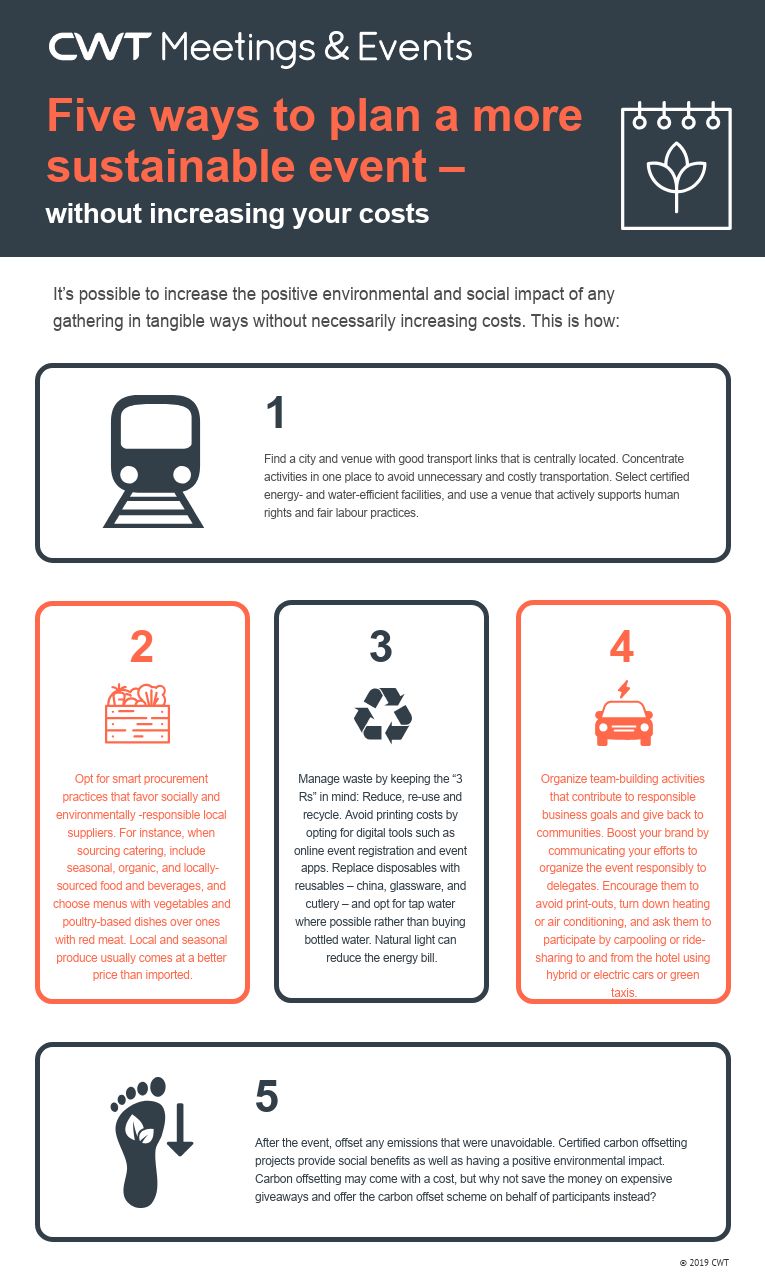
Event Trend #5: The use of chatbots for events
On a broad scale, a report recently published by Oracle shows that 80% of sales and marketing leaders say that they already use chatbots or intend to implement chatbots by the end of 2020. And, according to Forbes, the event industry is no exception to this rule. In fact, there are a few key examples that showcase how exactly conferences and events can make use of event chatbots, as shared by Super Event:
- When IMEX Frankfurt 2017 employed Frank the chatbot, he managed 3,600 messages from 780 users and helped them identify problems with their website’s FAQ.
- BizBash Florida used a chatbot named Betty to process 1,300 messages from 300 attendees. She produced a 57.9% engagement rate during the one-day event and handled customer service questions when the BizBash website went down.
- SXSW 2017 used a chatbot named Abby who handled 56,000 questions from 16,000 users. She could access the entire event database.
From further surveying, the results of which have been provided by Landbot.io, we can also see what a sample of individuals across four markets (Brazil, India, the UK, and the US) see as the biggest benefits of bots, many of which are heavily applicable to the events industry:
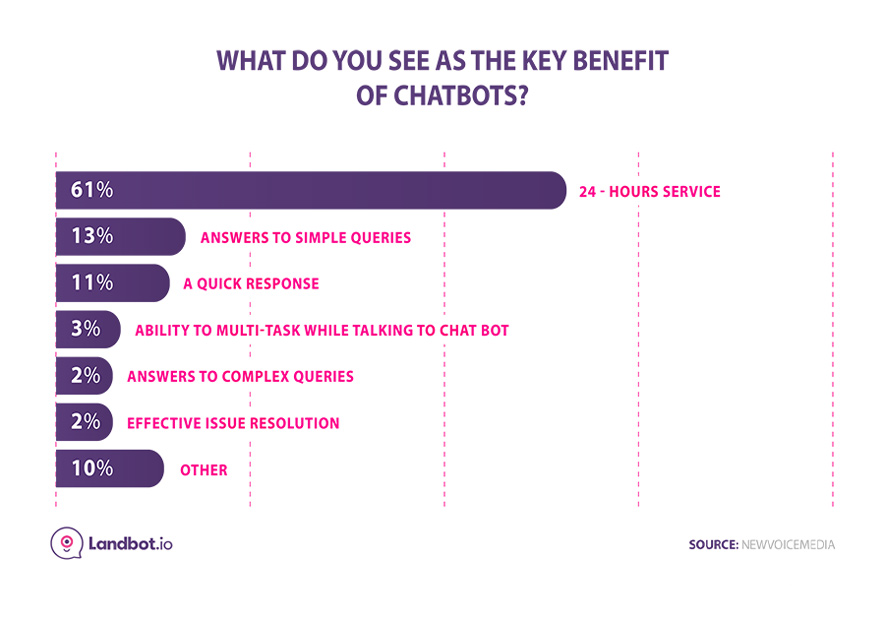
Even with all this information available to us, it’s difficult to find highly specific data about our industry in this regard, though all signs point to growth and further adoption by event organisers both in 2019 and beyond.
Verdict: True, generally.
What does this mean for event organisers?: If any of the use cases above reflect something you want to provide to your attendees, it could be worth your while exploring some event-specific options when it comes to chatbots. Some recommendations we’ve found include Morph.ai, E2M.live, and ConfBot.
Event Trend #6: Hosting events at new locations
According to reporting provided by Skift, 17-18% of event planners cite sourcing and researching venues as being among the biggest time sinks they experience as part of their jobs.
From that and our experience in the industry ourselves, there’s no hard evidence to suggest a new wave of organisers jumping ship for new locations just for the sake of it. It’s time-consuming, budget-consuming, and practically more difficult than sticking with the same venue you’re used to. Furthermore, there are some organisers who like to change things up, but it’s not been on a remarkably uniform basis across organisers in the industry.
As further proof that this event trend didn’t quite stand up to the test of time, the top destinations have stayed mostly the same across the last two years, and we can’t see that drastically shifting soon, either.
Verdict: False.
Event Trend #7: Projection mapping at events
If you’re not very au fait with projection mapping, it’s pretty self-explanatory. A large surface, usually a building or similarly big structure, is bathed in projections of scenes that tell a story to the audience via video.
GEM recently published an article that showcases ten gorgeous examples if you’d prefer a visual reference.
While this option is visually breath-taking, budget and time constraints mean it’s not something we’ve seen penetrate the conference space just yet. Although, if your conference has a budget similar to, say, the MTV Music Awards, please feel free to be the pioneer!
Verdict: False
Event Trend #8: Facial recognition at events
Facial recognition has piqued the interest of many and peaked in terms of public searches too:
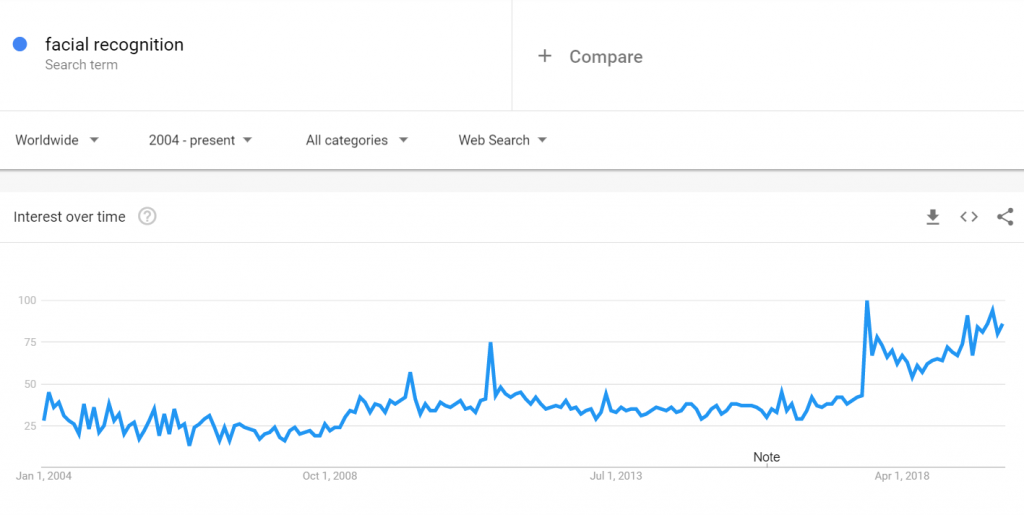
One major player has come through in the events scene with regards to facial recognition, and that company is Zenus. Based on claims that their CEO has made, their adoption rates (given that they work on an opt-in basis for facial recognition at every event they work on) has never fallen beneath 33% and nowadays comes in at around 60%.
However, despite the fact that it can cost as little as $500 to check in 1,000 people in sheer milliseconds, there are other concerns that must be addressed when it comes to whether or not adoption of this type of technology should be celebrated or scrutinised. For example, questions of racial and gender bias come into play. Additionally, the association of that data with personal info is something to question. And finally, practically, does the process really work as seamlessly as it seems?
Facial recognition is a 2019 event trend that we’ve definitely seen come true, but so too is it one to keep an eye on before jumping on the bandwagon.
Verdict: True, but a lot of people are on the fence.
What does this mean for event organisers?: The only thing to do in a situation like this is your research. By all means enquire with retailers of the technology to see if the approach fits what you want for your attendees and if they have answers you want based on any concerns you have.
Event Trend #9: Panic buttons for attendees
In July of 2018, a landmark law was passed in Chicago which now requires some hotel workers to be given panic buttons in case of their safety or comfort while fulfilling their jobs being put in jeopardy. Given that hotels are natural conference hosting venues, it was theorised that this trend could trickle down and eventually mean that attendees could be given panic buttons in 2019 to protect their safety at events. This hasn’t quite come to pass, though.
While additional states such as Washington have also brought in similar measures which are due to be implemented in 2020, there’s no sign that the events community are about to fully abandon their traditional safety procedures in favour of these devices. In fact, when a similar bill came to attention in California, the technology was described as “experimental, underdeveloped, and potentially faulty”. So, while the intentions behind the use of panic buttons may be good, the implementation at this stage may also cause harm.
Verdict: False (with alternatives).
What does this mean for event organisers?: While this technology hasn’t gained a big foothold in the events industry just yet, having safety procedures and touchpoints that ensure attendee comfort and security should still be top-of-mind for organisers. One example we’ve seen that works well is the “Ask for Angela” approach used by the organisers of Learn Inbound, which is well worth considering as an alternative:
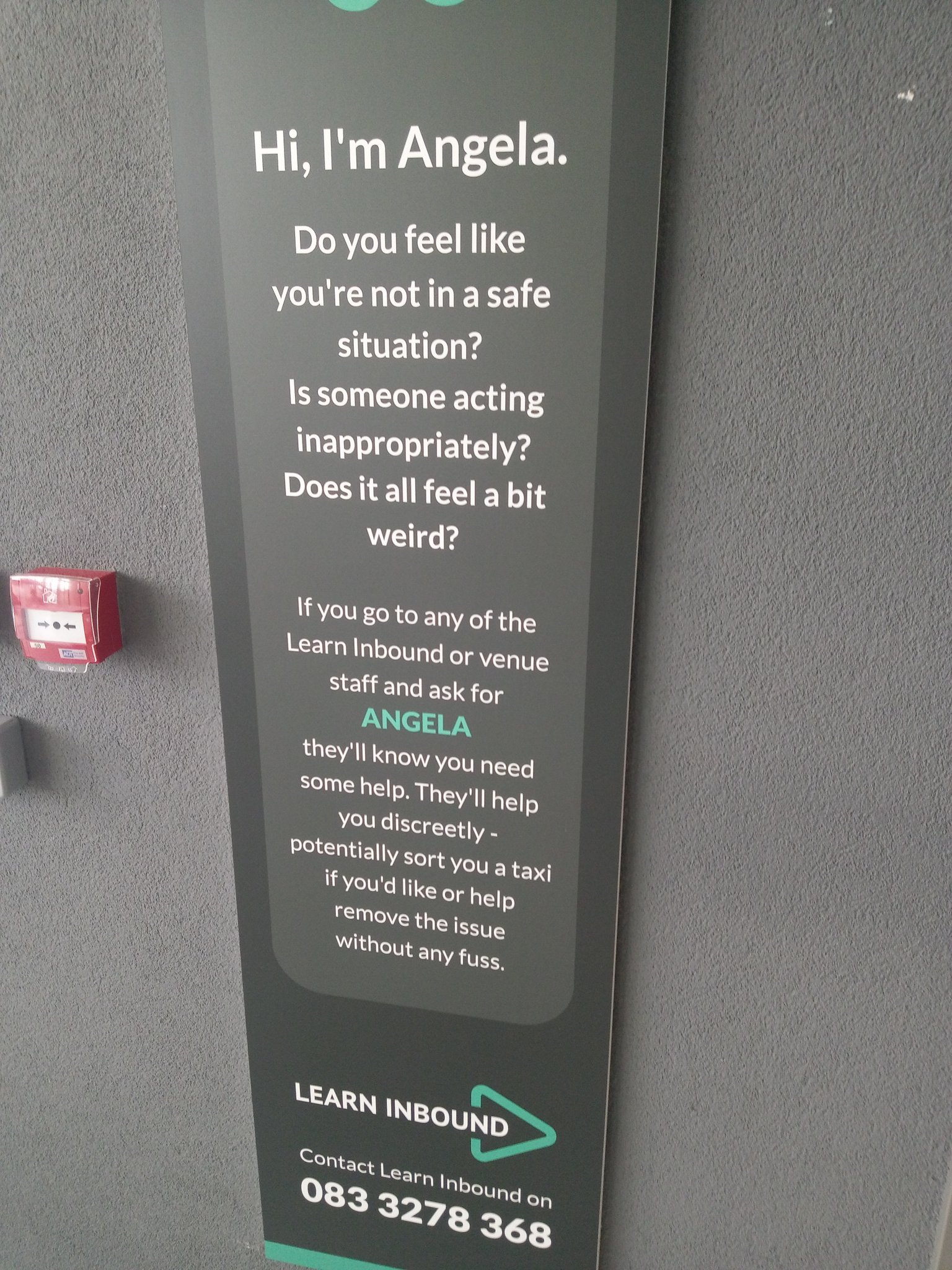
Event Trend #10: Authenticity
The thing about authenticity is that it has to be experienced to be recognised, most of the time. While it’d be nearly impossible to try to draw up any quantitative data about how ‘authentic’ events have been in 2019, we have it on testimony that this is something some of the finest organisers strive for in their work.
We recently spoke with Marc Thiele, the driving force behind beyond tellerand, who had this to say on the topic:
“Sometimes you think it’s not okay to be you for the people you have in your audience, but maybe it’s okay to just be yourself, and not hide yourself behind a different face or different character. I don’t think you have to be someone else. Try to find your own way and style. Come up with ideas and try them. Find your own tonality for your event. If it doesn’t turn out the way you want, then just stop doing it, but at least you tried something.”
Verdict: Less a trend, more of a respectable aspiration.
What does this mean for event organisers?: Make sure your event is truly yours. In Marc’s words, “If people feel this is real and not made up, they come back. They feel like nobody is cheating them. It feels like being at the home of a good friend. Honesty, being very open, being yourself, that’s the key.”
Event Trend #11: Brain dates
C2 Montréal is the leader when it comes to brain dates, a new form of networking that ensures comfortable and powerful connection between attendees. Using their Hub, where attendees can set up their profiles to share key information about themselves as well as key info about the festival, attendees are given a new and revolutionary way to network.
This system works by allowing those setting up their profiles to share their “Offers” a.k.a. some knowledge they can share and their “requests for knowledge” a.k.a. something they want to learn more about. The app then shows individuals who match with each other, as well as times that work for both parties involved.
Attendees are then free to meet wherever they like, and that includes a dedicated brain date space, sometimes with neat added extras like stationary bikes.
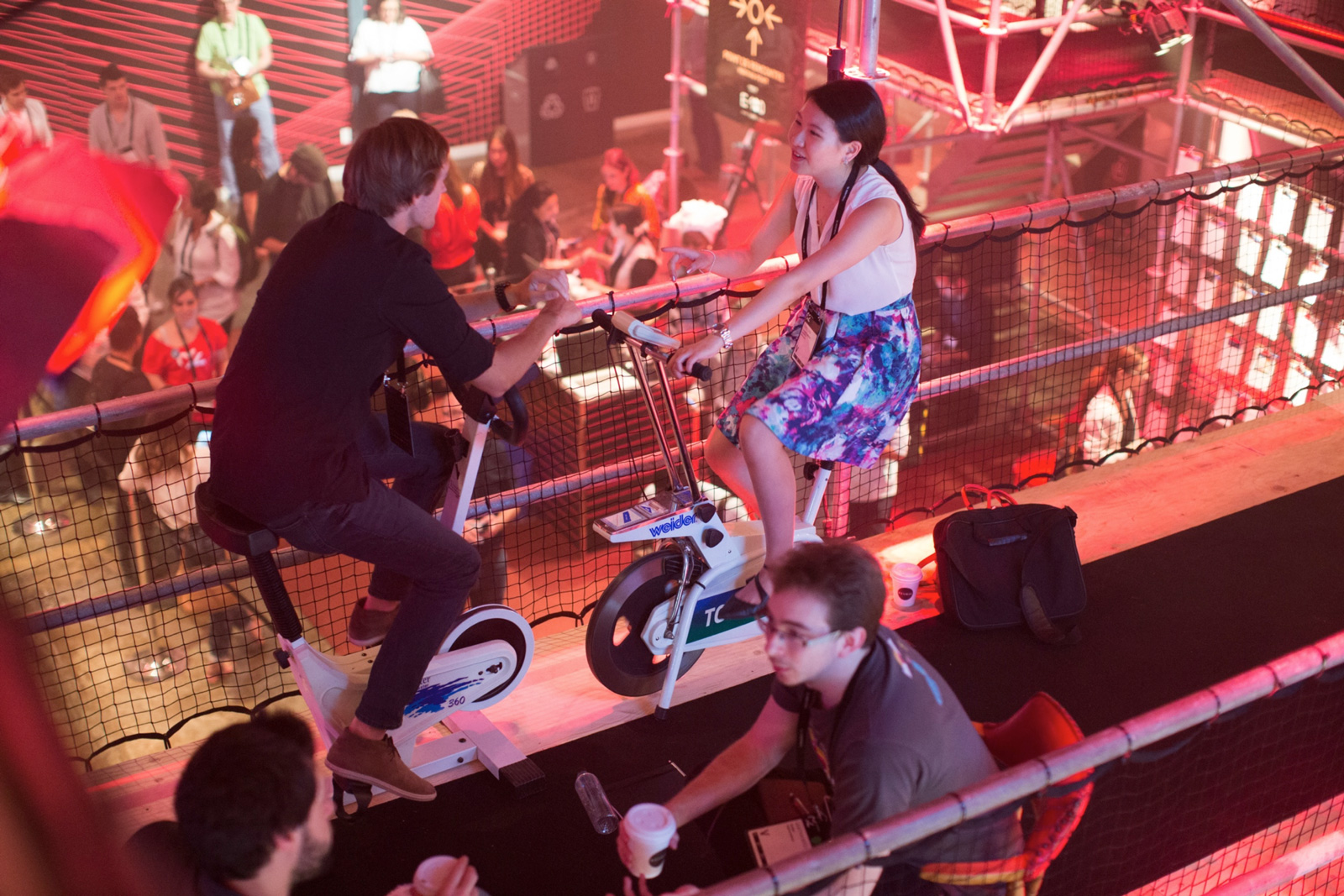
Since this formula was showcased first at C2 in 2015, the company behind the conference has expanded its offering and facilitates Brain Dates at conferences run by companies like TED, Salesforce, SaaStr and more.
Verdict: True.
What does this mean for event organisers?: It means you should consider trying it out for yourself! The infrastructure you use need not be as sophisticated as the examples above when you’re just starting out. There are many ways you can explore that can help people pre-book meetings with folks who are knowledgeable about what they’re interested in before your event begins.
Event Trend #12: The rise of wearable tech
Wearable tech was due to grow by 26% in 2019 from 2018. Now that 2019 is nearly through, we can confirm from new figures that this was almost spot on, and that the true growth was 25%. Furthermore, it’s easy to see that that expansion in its adoption extended to the events space.
This is further backed by reporting from key figures in the market like Samsung who attest to wearable tech use cases for events such as wayfinding, attendance tracking, and more. Additionally, the commercial success of companies like klik show that this trend is one that truly took hold in 2019 and is due to continue in the coming years.
Verdict: True.
What does this mean for event organisers?: Again, the best advice is to try it out! There is a wealth of possibilities when it comes to wearable tech for conferences. Here’s a taster.
Event Trend #13: Vegan food
According to the IAC, vegan food has been requested more and more in recent years at events, and was a rapidly catered-to 2019 event trend, if you’ll excuse the pun:
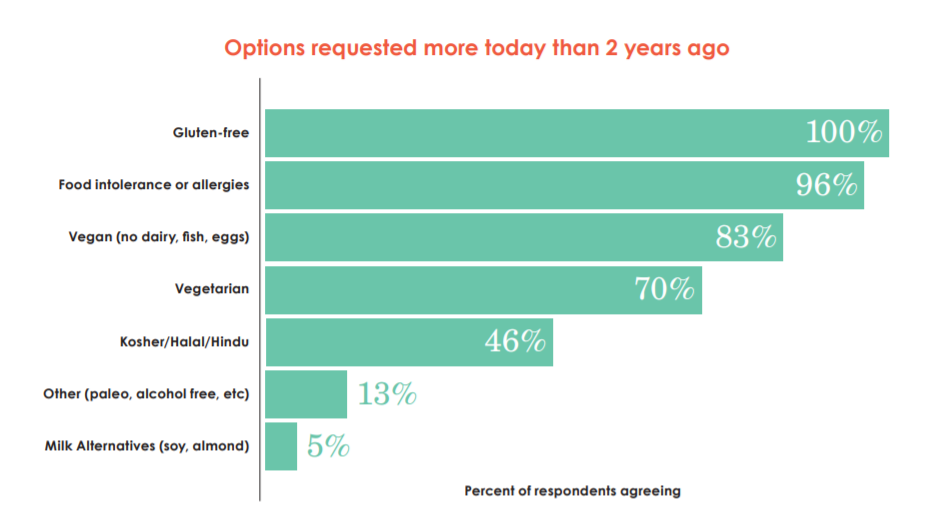
This claim is further compounded by evidence provided by commentary like this article from The Next Web which poses the idea that tech conferences go plant-based first altogether. Another take that’s worth considering and highlights audiences’ appetites for vegan fare is this piece by Roxanne Joncas that shows what the author generally eats at a conference and provides inspiration as to what those catering for conference audiences could offer to vegan attendees.
Verdict: True.
What does this mean for event organisers?: Gathering details about your attendee’s dietary requirements before your event is a no-brainer. Continuing to do this as well as putting an emphasis on the quality of your meat- and dairy-free catering is a wise tactic event organisers can employ to ensure they keep their increasingly plant-based audiences satisfied.
Event Trend #14: Festivalisation
Festivalisation is something we’ve seen in spades over the last year. So much so that we wrote a whole article dedicated to festivalisation just in the tech space recently. One key example that people always turn to is SXSW, an annual festival and conference that brings together innovators and creators across several disciplines to create an immersive and far-reaching experience.
We need only look to their success (and their 160,000 participants) to understand that this a trend that folks are ready to get behind and that is here to stay.
Verdict: True.
What does this mean for event organisers?: If you’re ready to take the first steps necessary to festivalise your event, EventMB have published five key rules to help you get started that you can read here.
Event Trend #15: Smart floors
This was more of a new idea than a well-adopted trend this year. Smart floors are designed to monitor where foot traffic is most populous at exhibits or at events (or even in the home). In fact, it could theoretically also be used to gauge which stands are most popular at exhibitions, or even who they’re most popular with.
However, this technology has not been widely adopted in the industry as yet. In August 2019, details of the potential use-cases for the technology were still being discussed, but we’ve not seen enough real-life implementations to make it a trend, or something event organisers should get fixated on just yet.
Verdict: False.
Event Trend #16: Virtual conferences
There are a few reasons why virtual conferences are a firmly confirmed event trend we saw in 2019. As per another point in this post, people are becoming increasingly aware of their commuting miles and the subsequent emissions they put out due to travel for conferences.
Furthermore, there’s no more accessible a venue for conferences than the comfort of somewhere you’re familiar with, like your own home, for instance. Enter: the virtual conference.
While there’s of course a whole other blog post or more that could be written about the value of face-to-face connection, supplementing physical conferences and events with virtual experiences is something we’ve been fortunate enough to indulge in in the past year. I was lucky enough to personally be part of the 2019 Global Marketing Day conference hosted by SEMRush, the first 24 hour iteration of a virtual conference.

All signs point to the fact that yet more of these kinds of conferences will take place in 2020. That said, no signs point to them eradicating physical conferences entirely, so you can rest easy.
Verdict: True.
What does this mean for event organisers?: It means you get an extra opportunity to reach your attendees. Whether you want to start small by experimenting with webinars between shows or events, or if you want to put up your keynote sessions live online as they take place, it’s worth considering what kind of audience growth you could gain by adding an online option to your events and conferences.
Amidst all the research that went into this post, one thing became clear and formed the undercurrent of what I learned writing it: the world of events is full of endless possibilities and opportunities to experiment. If 2020 ends up looking anything like 2019, we can look forward to another year of exciting event trends, and even more thrilling experiences that showcase them.